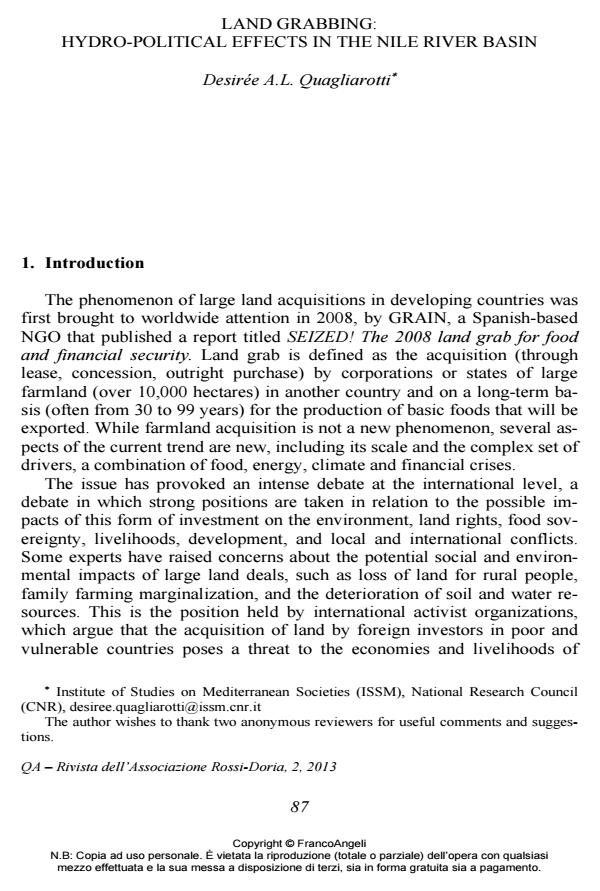Land grabbing: hydro-political effects in the Nile river basin
Journal title QA Rivista dell’Associazione Rossi-Doria
Author/s Desirée A.L. Quagliarotti
Publishing Year 2013 Issue 2013/2
Language English Pages 22 P. 87-108 File size 481 KB
DOI 10.3280/QU2013-002004
DOI is like a bar code for intellectual property: to have more infomation
click here
Below, you can see the article first page
If you want to buy this article in PDF format, you can do it, following the instructions to buy download credits

FrancoAngeli is member of Publishers International Linking Association, Inc (PILA), a not-for-profit association which run the CrossRef service enabling links to and from online scholarly content.
Il fenomeno del land grabbing sta alimentando un intenso dibattito a causa dei suoi potenziali impatti ambientali e socio-economici. Questo articolo vuole fornire un’analisi sui legami esistenti tra acquisizioni di terra e sfruttamento delle risorse idriche, focalizzandosi sul caso-studio del bacino del Nilo. L’abbondanza relativa di risorse naturali strategiche per la produzione agricola sta attirando investitori stranieri diffondendo il fenomeno del land grabbing in diversi Paesi rivieraschi del bacino del Nilo. Il nuovo contesto geopolitico, la crescita della popolazione del bacino e le previsioni riguardo la disponibilità idrica a causa dei cambiamenti climatici rendono le acque del Nilo una risorsa strategica fondamentale per l’equilibrio idropolitico della regione
Keywords: Land grabbing, Water grabbing, Nile Basin, Hydropolitics
Desirée A.L. Quagliarotti, Land grabbing: hydro-political effects in the Nile river basin in "QA Rivista dell’Associazione Rossi-Doria" 2/2013, pp 87-108, DOI: 10.3280/QU2013-002004